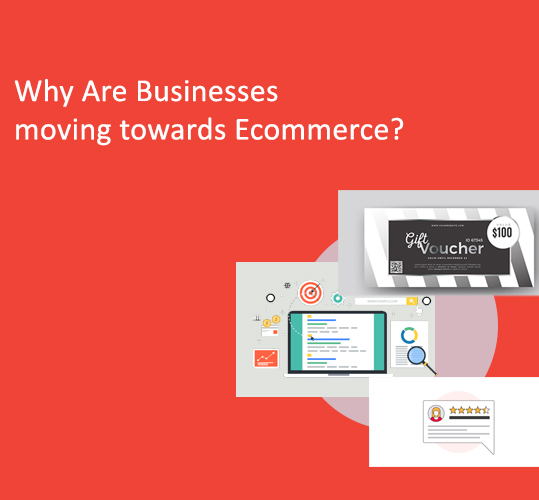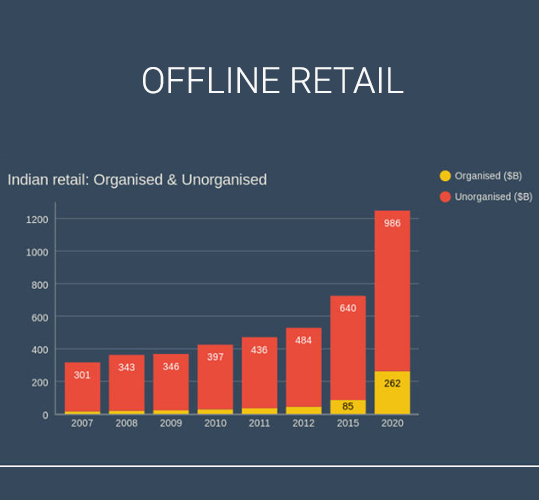Though eCommerce is opening a gateway of opportunities for businesses, it is also creating worries for offline retailers. One of the most puzzling topics of discussion among offline businesses is if eCommerce will ruin the traditional style of business conduction.
If you see the stats of the growth of the eCommerce market over the last decade, you will surely feel like technology is hurting traditional businesses. As per the research conducted by Pew Research in December of 2016, approximately 80% of the Americans purchased at least one product online in a year. Logistic Industries claims the rise in sales by 15.5% in 2017’s third quarter when compared with 2016’s third quarter. Considering these figures, you can perceive the edge-to-edge competition that eCommerce is giving to the offline business.
Why do you think eCommerce is spreading its roots in the market?
Consider it being lazy or privilege of luxury; people love to be served like a king. The arrival of eCommerce made numerous benefits in favor of customers that their shopping patterns changed over time. The key reasons behind the changing preference are:
- The trend of 2-day product delivery made it easier for customers to shop for the best products from anywhere in the world.
- The ability to shop 24*7 eases customers to shop as per comfort.
- Saves time of standing in long queues
- A huge variety of product comparison and selection gives numerous options to compare between.
- Ease to compare product prices and place an order for the most profitable deal.
Why Are Businesses moving towards Ecommerce?

Altered shopping pattern is one of the primary reasons that companies started seeking for new ways to satisfy the customer requirements. Ecommerce proved to be beneficial for businesses because:
- Now, the business conduction isn’t bound within geographical borders. Thus, there are more opportunities to grow.
- Pay-per-click (PPC) mechanism made it easier for businesses to advertise and market their newly opened store. Like the old days, you don’t have to wait for years to achieve success. Offering discounts and coupons makes it fascinating for customers.
- It turns easier to make the deal and address customer issues.
- Customer ratings and FAQs make it easier for businesses to convince other customers to buy the products.
What is enabling these physical stores to remain the first choice of people for shopping?
Though the shopping pattern has changed over time, the traditional shopping pattern is still known for:
- The buyer’s proximity to the shopping outlet enables them with the option to touch and feel the product.
- One-to-one assistance offered by sellers during shopping serves as the reliability factor among customers.
- Physical stores are still the symbolism of trust for certain customers in comparison to online stores.
- The bricks and mortar stores are away from cyber frauds and online scams. Thus, it is satisfying for customers who are still away from digital payments.
- No intervention of the internet for shopping, thus the security of personal details.
How Is Ecommerce overcoming the challenges thrown by the traditional business systems?
The most vital given by the traditional business is the value of the personal touch. If your business isn’t able to able to bridge the gap between customer demand and your supply system, you can’t survive by opening an eCommerce retail store.
Today’s generation is tech-savvy. As is observed, approximately 68% of people under the age of 35 are preferring to shop online instead of going to retail stores. Considering this, businesses are employing recent developments and trending technologies like live chat, 360-degree product view, AR/VR to enhance the rate of customer satisfaction. By deploying these technological advances, businesses aim at improving customer interaction.
The rage of mobile devices and an increase in the count of smartphone users has revolutionized the trend of eCommerce. Now, eCommerce is flourishing as m-commerce business. The count of online shoppers is multiplying over every year. People got the general habit of scrolling through the eCommerce sites, just like checking the posts over social media platforms. The inclination towards mobile devices is bringing more smartphone buyers in the US, UK, Germany, Spain, France, and Japan as per their online tool based online shopping patterns. Indian customers are also showing their active participation in this list of online buyers.
The improvement in product advertising and marketing techniques has a fantastic impact on targeting the right audience. PPC model of advertising made it easier to reach the customers and played a vital role in improving the conversion rate of eCommerce stores.
Businesses are using social media platforms as one of the most excellent tools to improve customer interaction, build the credibility of the brand, and grow conversion of the company. Unlike other platforms, via social media, you can try a bit informal approach to know the demands of customers.
The eCommerce giants, like Amazon, eBay, Rakuten, Flipkart, and numerous others, made a significant impact on changing the shopping pattern. The customer-centric policies, return, and refund policies, along with the 2-day delivery promise, are the key reasons behind the inclination of the enormous count of customers towards these marketplaces.
Online Retail- Everyone’s Dream Journey
The graph of the growth of the eCommerce sector is growing linearly over the year.
This surely ensures that when you are investing in the eCommerce business, you aren’t following the wrong path anyway!

The reasons behind the further expectation of the growth of Ecommerce sector are:
- When it comes to online business, huge discounts, coupon codes are vital attractions for every customer. These are not only to bring in the quality traffic but is also important to keep them intact and to improve the rate of business conversion.
- Online payments options and digital payment wallet is another reason for customers shopping online. Since these platforms also offer substantial discounts, so, cumulative discounts make it a profitable deal for online shoppers.
- Mcommerce, i.e., shopping through smartphones, has proven to be a game-changer in online sales as 60–65% of eCommerce sales happen through mobile platforms.
- It’s time for a reality check now! Although we have all the aforementioned factors, the reality is that, of the overall retail happening worldwide, the online retail sector contributes to nearly 1% of the total. So, now we have to look at where the retail is really happening. It happens, totally, at the lesser spoken about the offline sector.
Offline Retail – What It Says

The retail industry is widely categorized as organized and unorganized retail:
- Organized Retail: The businesses that are licensed to conduct trading activities and registered to pay taxes to the government.
- Unorganized Retail: They involve small unauthorized shops, including the general stores, corner shops, conventional Kirana shops, etc.
The organized sector of retail has seen incredible growth in the last few years. The unorganized sector comprises about 13 million stores that account for 95–96% of the entire Indian retail industry.
Nearly 2006–07, when eCommerce set foot globally, the entire offline retail sector was projected to experience a downfall. The whole picture showcased by online retail had initially built-up fear among the owners of brick-and-mortar stores.
However, wiping out all those notions, offline retail is very much alive today and is coming up with 95–98% of the total retail sales revenue. The research was done on 24 large retail stores in India, by credit rating agency CRISIL showed that these would grow between 13–15% over the next 2 to 3 years.
Cliche
Toys-R-Us served with their physical stores for 62 years. With the increase in online sales of toys, they closed their store.
Likewise, Take Sears, started their brick and mortar store in 1893, after serving for over 125 years, they closed their store due to bankruptcy. However, sears.com is still ranking among the top 10 eCommerce sites in the world.
Conclusion
To sum up, we say that eCommerce is evidently overpowering the traditional tactics of business conduction. But, the brick and mortar stores won’t get vanished entirely anyway. If you own a physical store, the chances of the survival of your business in the market entirely depend upon your business industry.
The eCommerce analysts recommend that the future of eCommerce lies in the hybrid model. Wherein both offline and online retail will work as one single entity. Omnichannel business presence can do wonders for your traditional stores and can surely improve your reach.







